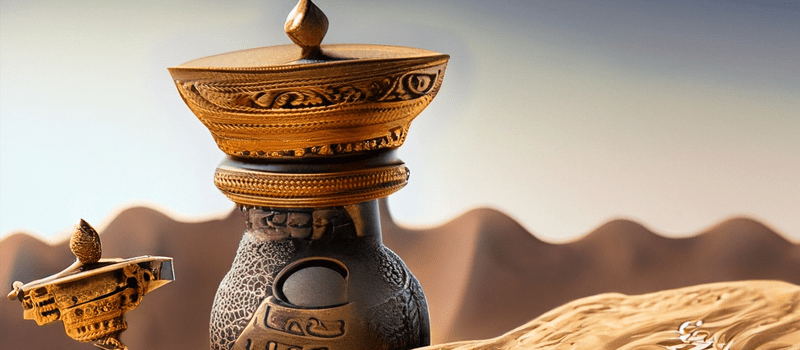Exploring Musharakah Abdalah: A Guide to Profit and Loss Sharing in Islamic Finance

I have always been fascinated by the concept of Musharakah Abdalah and its various forms. In this post, we will delve into the intricacies of Profit and Loss Sharing, Diminishing Musharakah, and Musyarakah Mutanaqisah, shedding light on their principles and applications in the world of Islamic finance. Lets gets started with the foundations and potential benefits of these unique financial arrangements.
Musharakah Adalah
Musharakah refers to a partnership or joint enterprise where two or more parties contribute capital to an investment project or business venture, and share in the profits and losses. It is one of the foundational concepts of Islamic finance, based on the principle of profit and loss sharing.
The key characteristics of musharakah include:
- Joint investment by two or more partners
- Partners share in the profits and losses of the venture
- Losses are borne proportionate to each partner’s capital contribution
- Management of the venture can be carried out by all partners or delegated to one partner
Musharakah is a joint enterprise or partnership structure with profit/loss sharing implications that is used in Islamic finance instead of interest-bearing loans.
The musharakah structure aligns with core Islamic finance principles of risk-sharing, avoiding interest (riba) and promoting joint partnerships between financiers and entrepreneurs.
How Musharakah Works
In a typical musharakah arrangement between an Islamic bank and a client, there is joint participation in the financing of an asset purchase or business venture. For example:
- The bank provides 80% of the capital as a financier
- The client provides 20% of capital
- Profits from the venture are shared between them at a pre-agreed ratio, often in proportion to capital contribution
- Any losses are shared in proportion to their capital investment
This aligns the interests of the financier and the entrepreneur to generate profits, while sharing the risk of potential losses.
Origins and Basis in Islamic Law
The concept of musharakah financing has its origins in pre-Islamic Arabic commercial customs and partnerships such as ‘mudarabah’ and ‘mufawada’.
In the commercial context, the musharaka (joint venture) and mudaraba (silent partnership) were some of the earliest manifestations of profit and loss sharing during the pre-Islamic period.
These were then formalized and adopted as permitted contracts under Islamic commercial law.
The Quran provides the basis for profit-loss sharing arrangements like musharakah based on partnerships and joint enterprises. For example:
“Let the man who has abundance of means spend according to his means; and let him whose means of subsistence are small spend of what Allah has given him. Allah burdens not any soul beyond that which He has given it.” (Quran 65:7)
This emphasizes that reward and responsibility should be shared in proportion to the resources contributed.
Key Islamic legal concepts relevant to musharakah include:
- Risk-sharing and linking rewards to risks taken
- Avoiding riba (interest)
- Promoting equity-based partnerships and investments
Thus, musharakah has roots in early Islamic commerce and clear basis in shariah principles.
Mechanics and Structures
The musharakah structure is flexible and can be implemented in various formats. The key requirements are:
- Partners agree to provide capital to an investment or business activity
- Profits are distributed according to a pre-agreed ratio
- Losses are borne by each partner based on their proportional capital contribution
Musharakah allows each partner to share in the profits based on a pre-agreed ratio, but losses are shared strictly in proportion to how much capital each partner contributed.
Some common structures include:
- Permanent musharakah – the partnership continues for a mutually agreed time period
- Diminishing musharakah – the share of the financier keeps diminishing over time as the client purchases those shares
- Musharakah mutanaqisah – similar to diminishing musharakah, where the client eventually becomes the full owner
An example musharakah arrangement:
| Contribution | Bank | Client |
|---|---|---|
| Capital | $400,000 | $100,000 |
| Profit ratio | 80% | 20% |
| Loss share | 80% | 20% |
This allows flexibility to structure profit-sharing and risks according to the particular requirements of the partners and venture.
Applications and Products
Musharakah financing is used in various applications by Islamic banks and financial institutions:
- Asset financing – homes, cars, equipment
- Project financing – construction, infrastructure, manufacturing
- Venture capital – startups and SMEs
- Investments – private equity, funds
For example, for home financing:
In a diminishing Musharakah contract, the Islamic bank and its client participate either in the joint ownership of a purchased asset, or in a joint commercial enterprise. –Maybank
Banks use musharakah for major assets and big ticket purchases. It provides an alternative to loans and interest-based financing.
Investment products like mutual funds also use musharakah arrangements between the investors and fund manager.
Overall, musharakah can provide diverse products and financing options for Islamic banks and their clients.
Benefits and Prospects
Musharakah financing offers several benefits:
- Aligns with Islamic finance principles of risk sharing and profit-loss partnerships
- Promotes entrepreneurship by providing capital in exchange for a share of profits
- Allows flexibility in structuring partnerships and sharing rewards
- Can enhance access to finance for businesses and individuals
As research indicates:
It is opined that Mushârakah mode may work as a catalyst of economic development by providing capital to small business owners. –ResearchGate
However, there are some limitations around variability of returns for financiers:
The lack of consistent and predictable rates of return in Mushârakah financing is the foremost issue highlighted by critics.
Overall, musharakah has good prospects but wider adoption depends on regulatory frameworks and improving risk mitigation for Islamic banks. It holds potential as an alternative financing model aligned with Islamic principles.
Case Studies
Some examples of successful musharakah financing applications:
SME Business Funding
A Malaysian Islamic bank offered musharakah financing for Small and Medium Enterprises (SMEs) to provide working capital and fund business expansion:
Bank ABC Malaysian Berhad has successfully devised mushârakah financing for providing working capital financing to SMEs.
Home Financing
Indonesian Islamic banks used diminishing musharakah for home financing:
Islamic banks in Indonesia have applied the diminishing partnership pattern (Musharakah Mutanaqisah) in order to finance houses for low-income groups.
Car Financing
Banks in Pakistan offered musharakah products for car financing:
Askari Bank Limited has introduced Mushârakah based car financing product in Pakistan in collaboration with a leading automobile company.
These demonstrate the range of applications for musharakah in practice.
Conclusion
In summary, musharakah is an Islamic financing structure with roots in early Islamic commercial partnerships and basis in the profit-loss sharing principles of shariah law. It aligns with the Islamic finance objectives of risk-sharing, equity partnerships and avoiding riba (interest).
The musharakah model provides a means for Islamic banks and financiers to fund assets and business ventures through joint partnerships and investment agreements, where profits are shared according to pre-agreed ratios while losses are borne proportionately based on capital contribution.
While some limitations exist around variability of returns, musharakah offers a compelling alternative to conventional debt-based financing. With appropriate regulatory support, it holds strong potential for further adoption in Islamic banking and finance, impacting diverse sectors ranging from SMEs to real estate.
As the ecosystem of Islamic finance continues to grow globally, musharakah partnerships can support access to shariah-compliant finance and promote financial inclusion aligned with faith-based values. With its foundations in ancient Islamic commerce and relevance for modern finance, musharakah may have much scope for meeting the needs of Muslim communities in the 21st century and beyond.






Responses